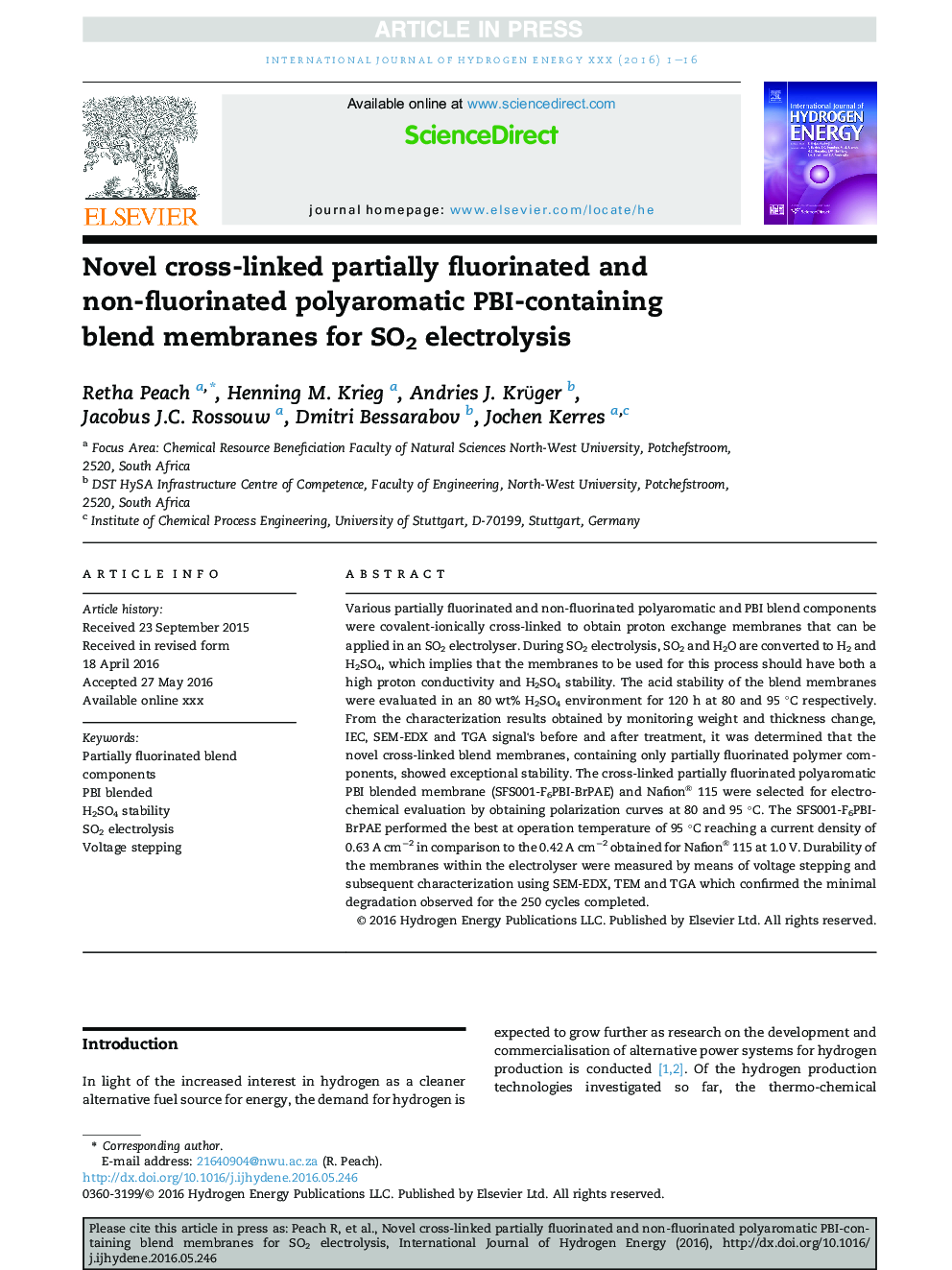| Article ID | Journal | Published Year | Pages | File Type |
|---|---|---|---|---|
| 7709953 | International Journal of Hydrogen Energy | 2016 | 16 Pages |
Abstract
Various partially fluorinated and non-fluorinated polyaromatic and PBI blend components were covalent-ionically cross-linked to obtain proton exchange membranes that can be applied in an SO2 electrolyser. During SO2 electrolysis, SO2 and H2O are converted to H2 and H2SO4, which implies that the membranes to be used for this process should have both a high proton conductivity and H2SO4 stability. The acid stability of the blend membranes were evaluated in an 80 wt% H2SO4 environment for 120 h at 80 and 95 °C respectively. From the characterization results obtained by monitoring weight and thickness change, IEC, SEM-EDX and TGA signal's before and after treatment, it was determined that the novel cross-linked blend membranes, containing only partially fluorinated polymer components, showed exceptional stability. The cross-linked partially fluorinated polyaromatic PBI blended membrane (SFS001-F6PBI-BrPAE) and Nafion® 115 were selected for electrochemical evaluation by obtaining polarization curves at 80 and 95 °C. The SFS001-F6PBI-BrPAE performed the best at operation temperature of 95 °C reaching a current density of 0.63 A cmâ2 in comparison to the 0.42 A cmâ2 obtained for Nafion® 115 at 1.0 V. Durability of the membranes within the electrolyser were measured by means of voltage stepping and subsequent characterization using SEM-EDX, TEM and TGA which confirmed the minimal degradation observed for the 250 cycles completed.
Keywords
Related Topics
Physical Sciences and Engineering
Chemistry
Electrochemistry
Authors
Retha Peach, Henning M. Krieg, Andries J. Krüger, Jacobus J.C. Rossouw, Dmitri Bessarabov, Jochen Kerres,
